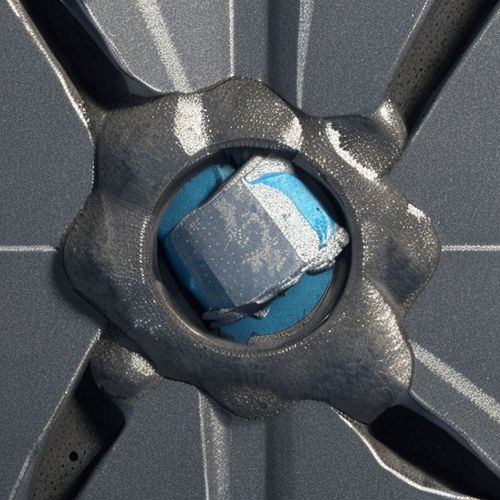The development of solid-state batteries has emerged as one of the most promising frontiers in energy storage technology. Unlike conventional lithium-ion batteries, which rely on liquid electrolytes, solid-state batteries utilize solid electrolytes, offering the potential for higher energy density, improved safety, and longer cycle life. However, the interface between the solid electrolyte and the electrodes remains a critical challenge that researchers must overcome to unlock the full potential of this technology.
The Solid-State Battery Interface Challenge
At the heart of the solid-state battery dilemma lies the interface between the solid electrolyte and the electrodes. In traditional lithium-ion batteries, the liquid electrolyte ensures good contact with the electrodes, facilitating efficient ion transport. In contrast, solid electrolytes often struggle to maintain stable and low-resistance interfaces with both the cathode and anode. This issue leads to increased impedance, reduced performance, and premature battery degradation.
One of the primary concerns is the formation of interfacial layers. When the solid electrolyte comes into contact with the electrodes, chemical reactions can occur, creating resistive layers that hinder ion movement. These layers, often referred to as space-charge layers or decomposition products, can significantly degrade battery performance over time. Researchers are actively investigating ways to mitigate these unwanted reactions through advanced materials engineering and interface design.
Material Innovations for Improved Interfaces
Recent advancements in material science have opened new possibilities for addressing interface challenges. Oxide-based solid electrolytes, such as LLZO (lithium lanthanum zirconium oxide), have shown promise due to their high stability against lithium metal anodes. However, their rigid nature makes it difficult to achieve good physical contact with electrodes. To overcome this, scientists are developing composite electrolytes that combine the benefits of different material classes.
Sulfide-based electrolytes offer superior ionic conductivity and better mechanical properties for interface formation but face challenges with chemical stability. Innovative approaches, such as introducing thin buffer layers between the electrolyte and electrodes, have demonstrated improved interface stability. These buffer layers, often just nanometers thick, can prevent unwanted reactions while maintaining efficient ion transport.
The Lithium Metal Anode Conundrum
The interface between solid electrolytes and lithium metal anodes presents particularly complex challenges. While lithium metal offers the highest theoretical capacity for anodes, its tendency to form dendrites during cycling poses serious safety risks. In solid-state batteries, these dendrites can penetrate the solid electrolyte, causing short circuits. Researchers are exploring various strategies to stabilize the lithium metal interface, including artificial SEI (solid electrolyte interphase) layers and three-dimensional host structures.
Recent work has shown that applying controlled pressure to the battery stack can improve contact between the lithium metal and solid electrolyte. This mechanical approach, combined with chemical modifications to the interface, has led to significant improvements in cycle life. However, implementing such solutions in practical, commercially viable batteries remains an ongoing challenge.
Cathode Interface Considerations
While much attention has focused on the anode side, the cathode interface presents its own set of challenges. Most high-performance cathode materials expand and contract during charge and discharge cycles, which can break contact with the rigid solid electrolyte. This mechanical mismatch leads to increased interface resistance and capacity fade over time.
To address this, researchers are developing compliant interface materials that can accommodate volume changes while maintaining ionic and electronic conductivity. Some promising approaches include the use of soft interfacial layers or the integration of conductive additives directly into the cathode-electrolyte interface. These solutions aim to create more resilient interfaces that can withstand the rigors of repeated cycling.
Characterization and Diagnostic Techniques
Understanding and optimizing solid-state battery interfaces requires advanced characterization tools. Techniques such as in-situ electron microscopy, X-ray photoelectron spectroscopy, and impedance spectroscopy are providing unprecedented insights into interface phenomena. These tools allow researchers to observe interface evolution in real-time and under operating conditions, enabling more targeted improvements.
New computational methods are also playing a crucial role in interface development. Molecular dynamics simulations and density functional theory calculations help predict interface stability and ion transport mechanisms at the atomic scale. This combined experimental and theoretical approach is accelerating the discovery of optimal interface materials and architectures.
Manufacturing and Scalability Challenges
Even when promising interface solutions are identified in the lab, translating them to mass production presents significant hurdles. The precise control required to create nanometer-scale interface layers is difficult to achieve at industrial scales. Additionally, the need for specialized processing conditions, such as controlled atmospheres or high-temperature sintering, adds complexity and cost to manufacturing.
Researchers are working to develop more scalable fabrication methods, such as roll-to-roll processing and vapor deposition techniques that can produce uniform interfaces over large areas. The integration of these processes into existing battery manufacturing infrastructure will be critical for the commercial viability of solid-state batteries.
The Road Ahead for Solid-State Battery Interfaces
While challenges remain, recent progress in interface engineering has brought solid-state batteries closer to commercialization. Several companies have announced plans to introduce solid-state batteries in electric vehicles within the next few years, though initial implementations may use hybrid designs that incorporate some liquid electrolytes to address interface issues.
The ultimate goal remains the development of all-solid-state batteries with stable, low-resistance interfaces that can deliver on the technology's full promise. Achieving this will require continued collaboration between materials scientists, chemists, engineers, and manufacturers. As understanding of interface phenomena deepens and new materials emerge, the prospects for overcoming these challenges appear increasingly bright.
The interface challenges in solid-state batteries represent not just obstacles, but opportunities for innovation. Each breakthrough in interface design brings us closer to realizing batteries with unprecedented energy density, safety, and longevity. The solutions developed for these challenges may well define the next generation of energy storage technology.

By Megan Clark/Apr 19, 2025

By Thomas Roberts/Apr 19, 2025

By Thomas Roberts/Apr 19, 2025

By Emily Johnson/Apr 19, 2025

By Samuel Cooper/Apr 19, 2025

By Samuel Cooper/Apr 19, 2025

By George Bailey/Apr 19, 2025

By Joshua Howard/Apr 19, 2025

By William Miller/Apr 19, 2025

By Emily Johnson/Apr 19, 2025

By William Miller/Apr 19, 2025

By James Moore/Apr 19, 2025

By Joshua Howard/Apr 19, 2025

By William Miller/Apr 19, 2025

By James Moore/Apr 19, 2025

By Elizabeth Taylor/Apr 19, 2025

By Grace Cox/Apr 19, 2025

By Grace Cox/Apr 19, 2025

By Joshua Howard/Apr 19, 2025

By David Anderson/Apr 19, 2025